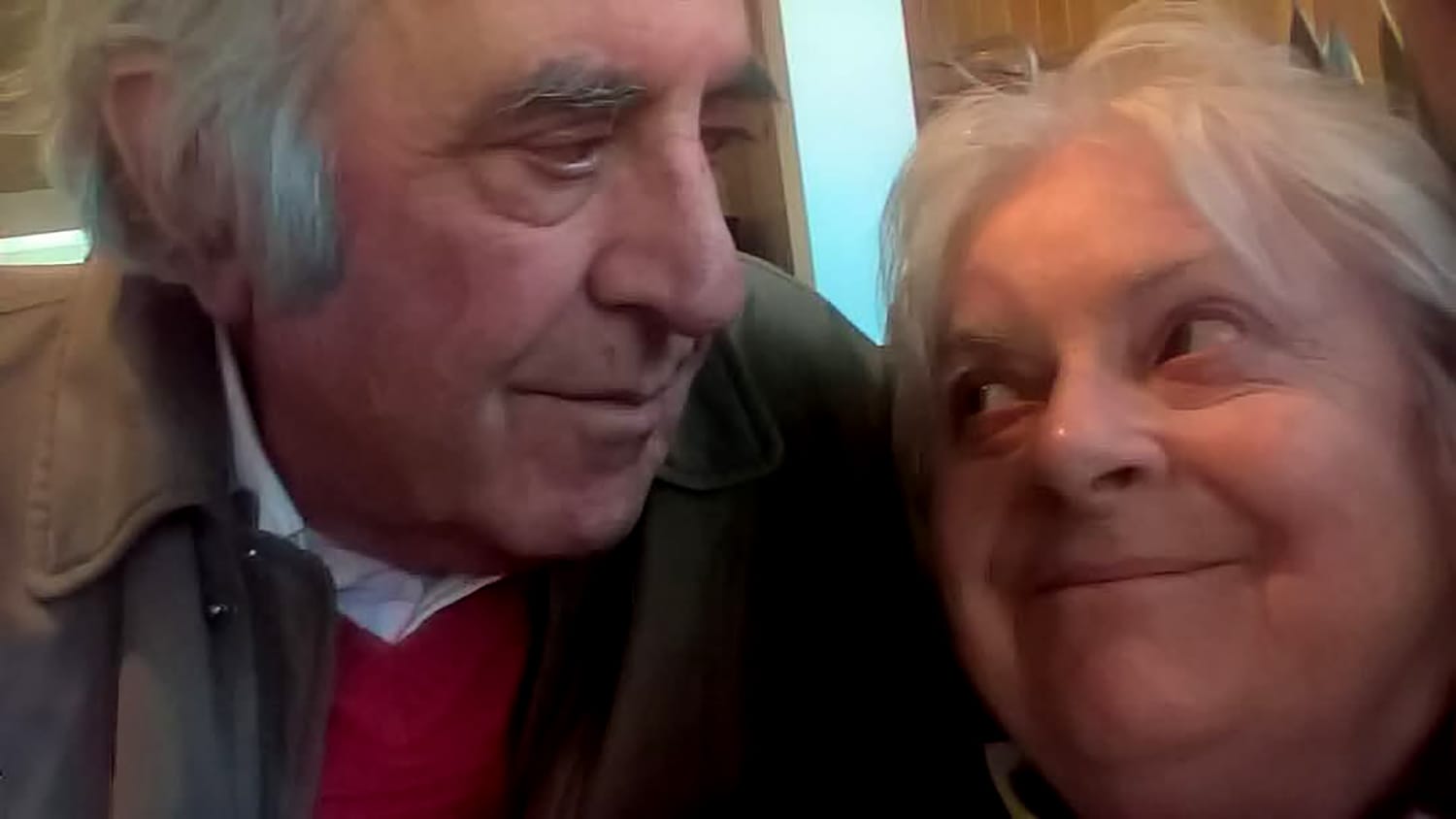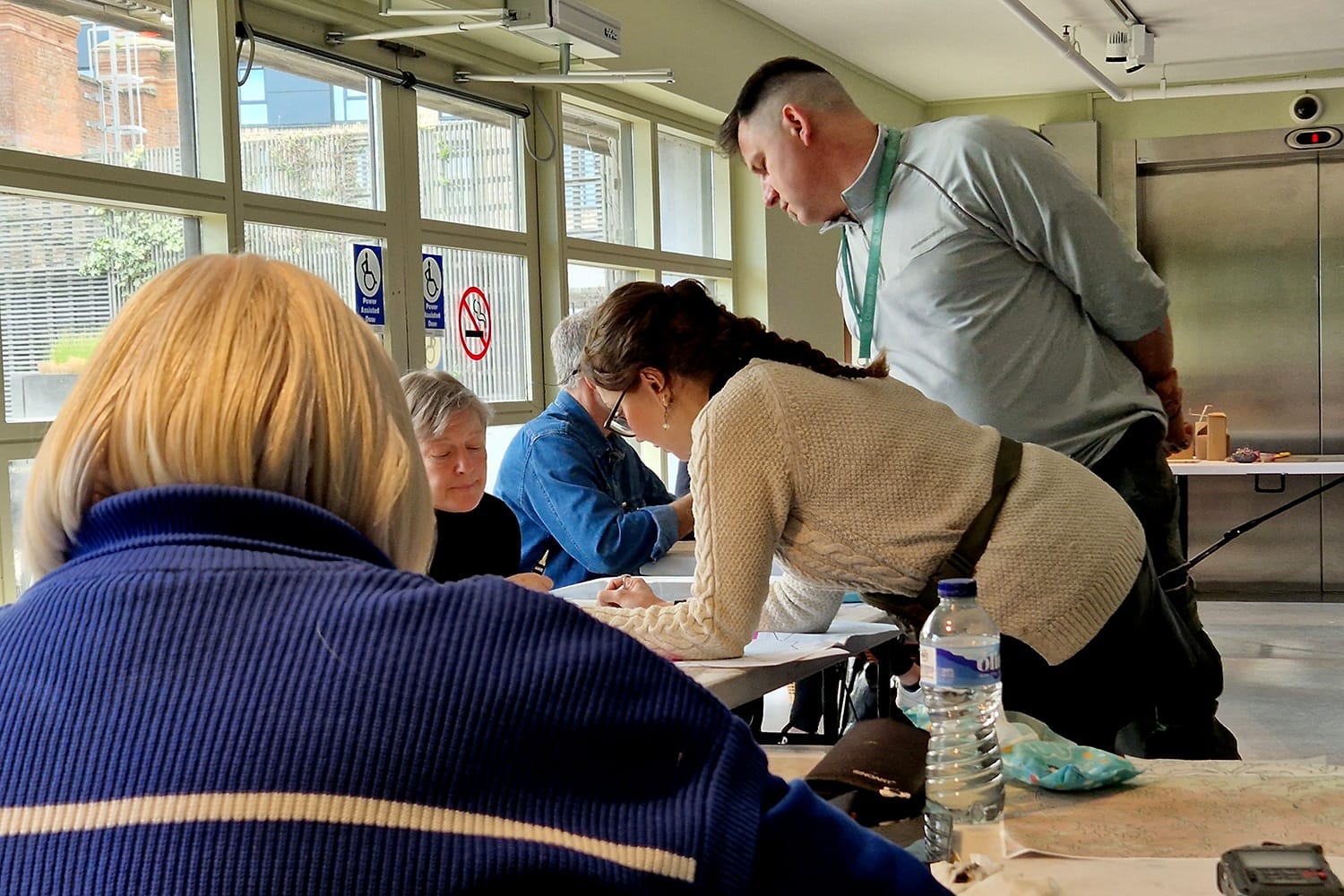After years of work by council, government abruptly spiked policy meant to deliver arts spaces in the city
“It was hugely dispiriting,” says Labour Councillor Darragh Moriarty, who chairs Dublin City Council’s arts committee.
“Nowruz was very special to us. That’s why I’m here,” she says.

Inside a sunlit room facing the roof garden of Chester Beatty Museum, the doors of a spacious lift slid open, and a clutch of people trickled out.
Elma Khareghani, in dark blue jeans and a yellow jacket, with sunglasses on her short light-blonde hair, slowly treks over to one corner of the room.
She’s nursing a cold and wears a medical mask to avoid passing it on, she said later.
She and the others had come for a “Nowruz workshop”. Nowruz, which means new day in Farsi, is a 13-day holiday in Iran, starting on 20 March, marking the rise of spring and the Persian New Year.
Roxana Manouchehri, an Iranian artist, has been organising these workshops for years in anticipation of Nowruz, she said, dreaming up different themes each year. “I was thinking what should I do to trouble myself,” she told her class, smiling.
She stood in the middle of the room in a short leather skirt and a cream-coloured jumper with a small bag around her waist.
Manouchehri has been living in Ireland since 2009. An artist inspired and moved by the glass illustrations of Harry Clarke, she fuses his style with patterns that figure in Persian glass art, she said.
That’s the theme of this year’s Nowruz workshop, which ran from 15 to 16 March at Chester Beatty. But besides a quick vignette of Nowruz, the Persian New Year doesn’t come up at the workshop.
For most of the Irish attendees, Nowruz is a world in which they don’t travel. Several said they didn’t know what it was.
“It’s very sad, isn’t it?” said Manouchehri during the break. “Everybody knows about the Chinese New Year, it’s a big thing here, or even Indian Diwali.”
Manouchehri says the political situation in Iran has driven a wedge between its citizens abroad that makes it difficult for them to come together and promote the culture.
In Ireland, Iranian citizens are either pro-regime, or monarchist supporters of the late Shah’s son, Reza Pahlavi, or neither, said Manouchehri.
“And all these groups hate each other,” she said with a laugh. “And they bring it up.”
But for Khareghani, the woman in a medical mask, the workshop revives the memory of a man she used to celebrate Nowruz with, Syed Mostafa Khareghani. A charming, handsome Iranian guy she met on a night out in Birmingham 50 years ago, she said.
She’s still unmoored by grief and had come all the way from Kilkenny for a taste of something that reminded her of Mostafa, Khareghani said.
“My husband passed away a year ago. Nowruz was very special to us. That’s why I’m here,” she said, tearing up.

About a decade ago, Manoucheri got invited to Nowruz celebrations at the City Hall, she said during a break in the workshop.
She accepted the invite but noticed that officials from the Iranian embassy were around when she arrived.
She said hello, “and they shook my hand”, says Manouchehri, raising her eyebrows and gesturing to her head to signal that she wasn’t covering her hair, a mandatory dress code for women in Iran.
But things got awkward and contentious when a crowd holding a long-ago flag of the country turned up, said Manouchehri.
Iran’s flag, during the monarchy, featured a lion clutching a sword, the sun rising behind the animal, all golden and glowy. It’s known as the “lion and sun flag”.
After the revolution that toppled the monarchy in 1979, the word Allah replaced the sword-bearing lion on the flag.
For Manouchehri, it was clear that these gatherings weren’t going to work, she says. “We need something without anything political in it, without extremists from both sides, just to celebrate culture, you know what I mean?”
Now, there’s a gulf between her and Iranians in Dublin, she says. “I’m completely disconnected from the embassy and the Iranian community.”
Nowruz itself is far from divisive in Iran, celebrated by all Iranians, including the country’s Armenian and Jewish minorities.
It’s also observed in countries like Tajikistan, َAfghanistan, Turkmenistan and Uzbekistan.
Manouchehri has asked the Chester Beatty in the past to plan something just for Nowruz, like setting up a table with haft-sin downstairs, she said.
“I like Nowruz to be recognised as something we can inform through places like Chester Beatty and other museums or cultural Irish organisations,” she said.
A spokesperson for the Chester Beatty said they don’t have plans to set up haft-sin at the moment.
Haft-sin, which means seven “S”es – haft means seven, and “sin” is the way the letter “S” is pronounced in Persian – involves arranging a sprawl of seven objects that start with “S” on the table.
These things symbolise new beginnings, spurring hope that rebirth is possible.
An apple, or sib in Persian, for health. Coins or sekkeh, in hopes of a prosperous year.
A goldfish is also part of the haft-sin table, symbolising swimming forward and away from the past.
The New Year’s prayer, muttered just seconds before it rings in, is also a cry for change and a fresh start.
On the 13th day of Nowruz, Iranians take to parks and greens for a picnic. The tradition is called “13 beh-dar”, which means “getting rid of the 13th”. Though the state calls it “Nature Day”.
Staying home on the 13th of Farvardin – the first month of Spring in the Persian calendar – brings bad luck, ancient myth holds.
Khareghani, the widow who’d attended the workshop, was working at a hospital in Birmingham in the United Kingdom when she met Mostafa Khareghani in 1975.
“This gorgeous man walked in, we looked at each other, and that was it,” she said.
They travelled to Iran shortly after the monarchy fell in March 1979, said Khareghani, but decided to settle in Ireland.
They both loved art and dabbled in it, she says. Mostafa spoke well but struggled with writing in English. “He could speak for Ireland, England and Wales,” said Khareghani, chuckling.
At Chester Beatty’s Nowruz workshop, Khareghani fussed over tracing floral shapes in the style of Persian embroidery to later imprint on acetate sheets that Manouchehri had cleaved with a cutter.
“You like complicated. You married an Iranian,” said Manouchehri, chuckling and glancing at Khareghani’s practice sheet.

All of that is to create an illusion of glass illustrations of Harry Clarke with a Persian twist to welcome Nowruz, said Manouchehri.
She’s brought all the stuff for the workshop, like ink and paint tubes, from Tehran, Iran’s capital city, from which she returns suitcases full after her periodic visits, Manouchehri said.
Glass art isn’t easy to learn and teach, says Manouchehri.
“Oh, for god’s sake,” says Khareghani, breaking into a laugh as Manouchehri underlined the importance of delicately pressing on the ink tubes.
Orna Crinion, a lecturer at Dundalk Institute of Technology, had picked out floral ornaments of Isfahan – Iran’s third biggest city – to trace and imprint.
Isfahan, ornate with relics of the nation’s past, showcases the best of Persian architecture, drawing Western tourists for a glimpse of what was.
“I had come to an exhibition from Isfahan [at Chester Beatty] years ago, and oh my god … ,” Crinion says.
That’s why she’d picked the Isfahan patterns. Crinion, like several others in the class, said she hadn’t heard about Nowruz, but she loves to visit Iran.
Manouchehri says she sometimes teaches calligraphy but doesn’t bother mentioning the Persian alphabet the students are learning to write.
“Why would they want to learn Persian alphabet anyway?” she said.
As her students burst out of the room to grab coffee and lunch, the booming sound of drums from outside reverberates in the room. Day one of the St Patrick’s Festival.
Khareghani stood behind for a bit, going through her phone, and showing photos with Mostafa, and of their artwork.
On the table, Persian patterns on students’ sheets, half-traced with black ink, slowly take on a new life.